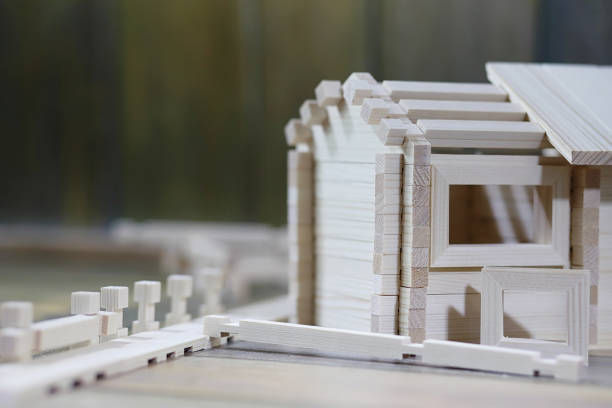Wooden model assembly is a hobby that transcends generations, offering enthusiasts a chance to create miniature masterpieces. One crucial aspect that significantly influences the outcome of these projects is the choice of wood. In this comprehensive buyer’s guide, we delve into the world of wood types for model assembly, helping you make informed decisions that align with your crafting goals.
Understanding the Basics: Common Wood Types Used in Model Assembly
Before embarking on your next model assembly project, it’s essential to familiarize yourself with the common wood types used in the crafting world. From balsa and pine to cedar and birch, each wood type has its unique characteristics that can impact the final appearance and durability of your creation.
Balsa Wood: Lightweight and Versatile
Balsa wood is a popular choice among model enthusiasts due to its lightweight nature. Known for its easy workability, balsa allows for intricate detailing and precision. However, its softness may make it susceptible to damage, so it’s essential to consider the intended use of your model before choosing balsa.
Pine Wood: Affordable and Accessible
For those on a budget, pine wood is a cost-effective option that remains widely accessible. While it may not be as lightweight as balsa, pine offers a good balance between affordability and workability. It’s a suitable choice for various projects, especially for those just starting in the world of model assembly.
Cedar Wood: Aromatic and Durable
Cedar wood is known for its distinctive aroma and natural resistance to decay. Its durability makes it an excellent choice for models that may be exposed to different environmental conditions. While cedar may be heavier than balsa or pine, its resilience adds a level of sturdiness to your creations.
Birch Wood: Smooth and Stable
Birch wood is prized for its fine grain and smooth texture. Its stability makes it a favorite among model builders seeking precision and a polished finish. While birch may be a bit heavier than balsa, its reliability in holding intricate details makes it a preferred choice for advanced model assembly.
Factors to Consider: Choosing the Right Wood for Your Project
- Project Complexity: Assess the intricacy of your model. For detailed projects, a stable wood like birch might be preferable, while simpler designs could benefit from the lightweight nature of balsa.
- Budget Constraints: Consider your budgetary limitations. Pine is a cost-effective option for beginners, providing a balance between affordability and workability.
- Intended Use: Reflect on where your finished model will be displayed. Cedar’s resistance to decay makes it suitable for outdoor displays, while birch might be ideal for indoor showcases.
Conclusion: Crafting with Purpose
As you embark on your wood model assembly journey, remember that the type of wood you choose can significantly impact the overall outcome of your project. By understanding the characteristics of different wood types and considering your specific needs, you can make informed decisions that enhance the quality and longevity of your creations. Happy crafting!








